You’ve seen them on your feed: bold headlines, swipeable slides, and quick insights.
These are LinkedIn carousel posts. They’re made from multi-page PDFs that let you share tips, stories, or ideas one slide at a time.
They work. Carousels boost scroll time, saves, and shares.
And LinkedIn’s algorithm loves that. Today, I will show 10 examples to inspire you, with formats, visuals, and tips you can mix.
Save this article: How to Create a LinkedIn Carousel, so you can create your own carousel after seeing what works (and what doesn’t).
10 LinkedIn Carousel Post Examples (Grouped by Use Case)
Here are some carousel post ideas you can adapt, complete with structure, visual examples, and actionable tips.
1. Educational Carousels
One of the easiest ways to start using LinkedIn carousel posts is by sharing something educational. This can be a tip, a how-to, or a breakdown of a complex topic.
These posts work because they’re immediately valuable. Your audience doesn’t need to follow you or know your brand to get something useful from you.
Here’s a great example:
“5 SEO Mistakes You’re Probably Making”
- Slide 1: Bold headline with a common problem
- Slides 2–6: Each slide covers one mistake with a short explanation
- Final slide: CTA like “Save this for later” or “Want the full checklist? DM me”
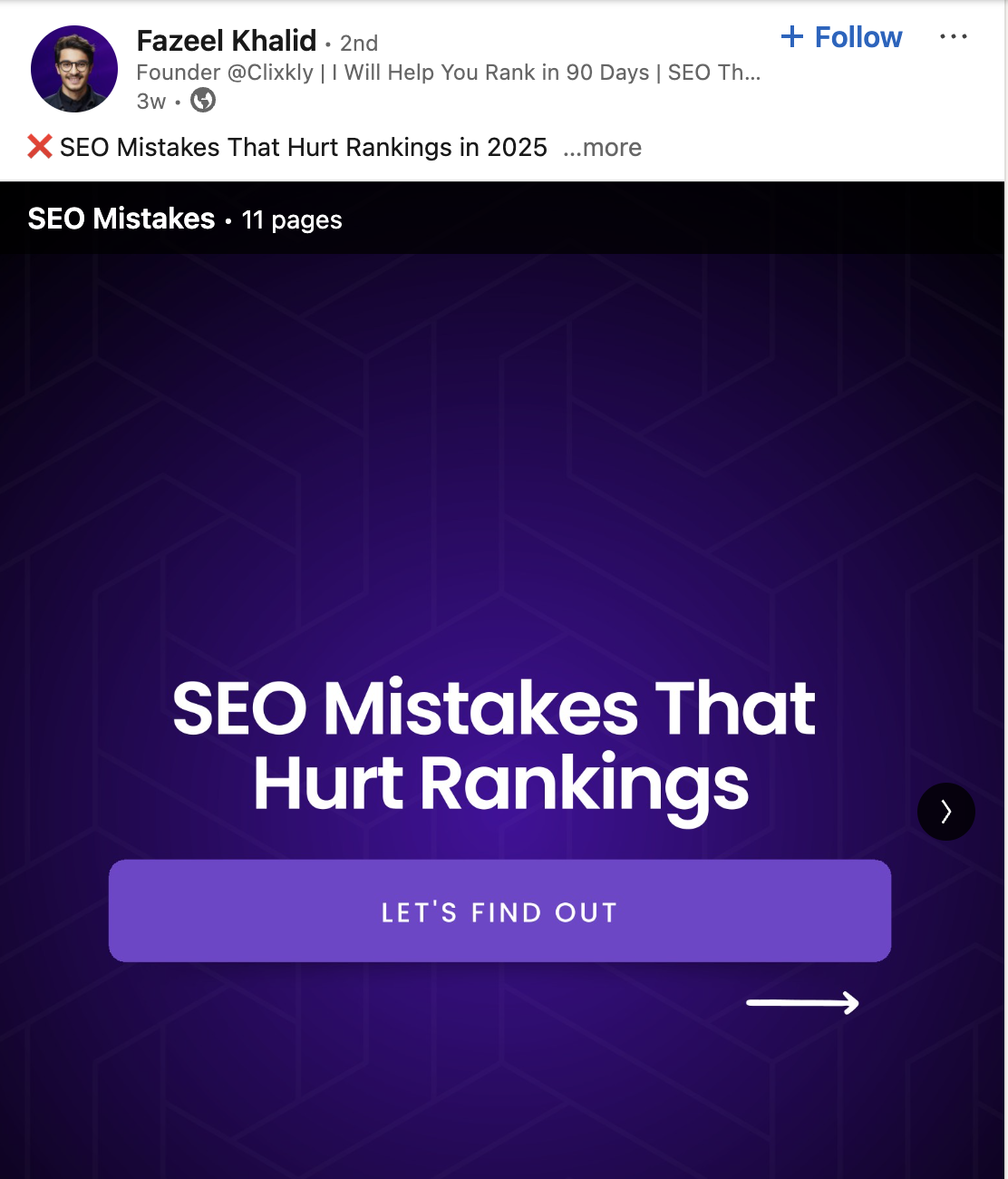
Educational carousels tend to get more impressions and saves because people want to return to them. They also increase dwell time, which LinkedIn rewards with better reach.
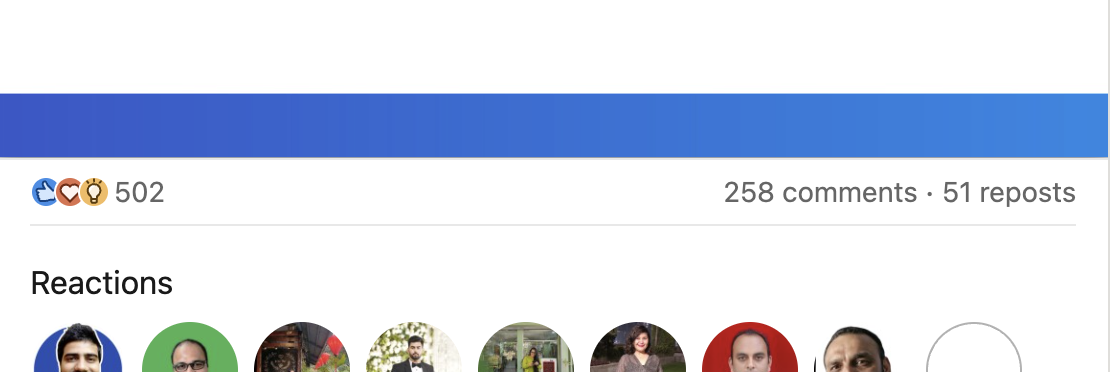
If you're trying to grow your personal brand or show your expertise, this format is perfect. It works well for marketing tips, tutorials, business insights, and even short case studies if they’re framed as lessons.
Make sure your design is clean and easy to read.
Use high-quality images or bold text over a simple background. And remember: the first slide is everything. If it doesn’t stop the scroll, the rest won’t matter.
Here’s another educational example on LinkedIn:
- Take a recent blog post, webinar, or thread you wrote.
- Turn the 3–5 main points into slides.
- Add a CTA at the end: ask for feedback, offer a link, or invite a conversation.
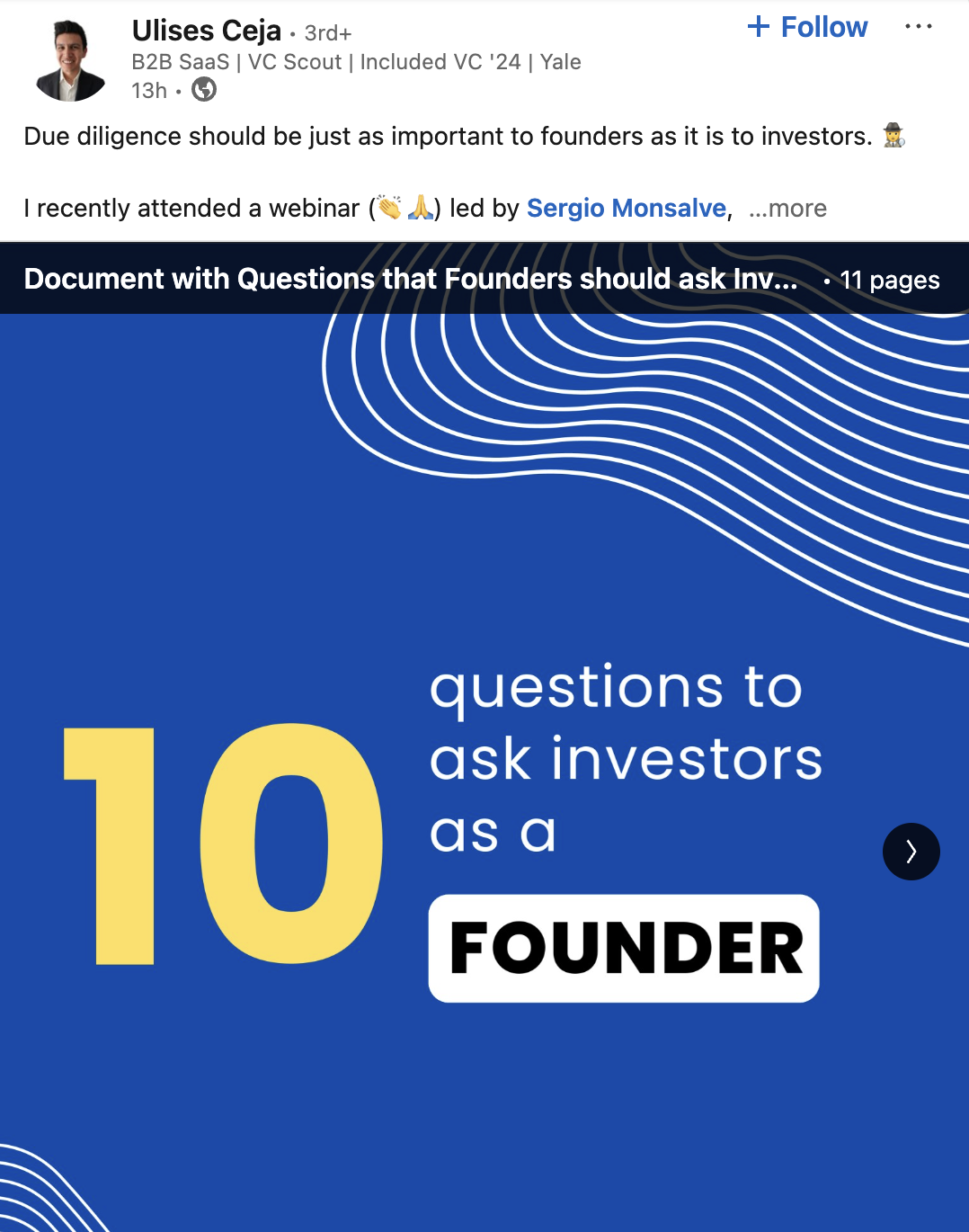
You don’t need to overthink it. Educational carousels are about clarity, not design perfection. If it helps someone learn something quickly, it works.
2. Thought Leadership & Opinions
Some of the most engaging LinkedIn carousel posts aren’t “tips” or tutorials; they’re opinions.
Sharing your perspective on something happening in your industry (or even a hot take) can spark conversation fast. These carousels work best when they’re bold, honest, and have a clear point of view.
Here’s an example that performs well on LinkedIn:
“Unpopular Opinion: These Might Be Hurting Your Sales Calls”
- Slide 1: The bold statement
- Slides 2–4: Why you believe this, maybe it’s about friction, lost conversions, or personal experience
- Final slide: Ask a question: “Do you agree?”
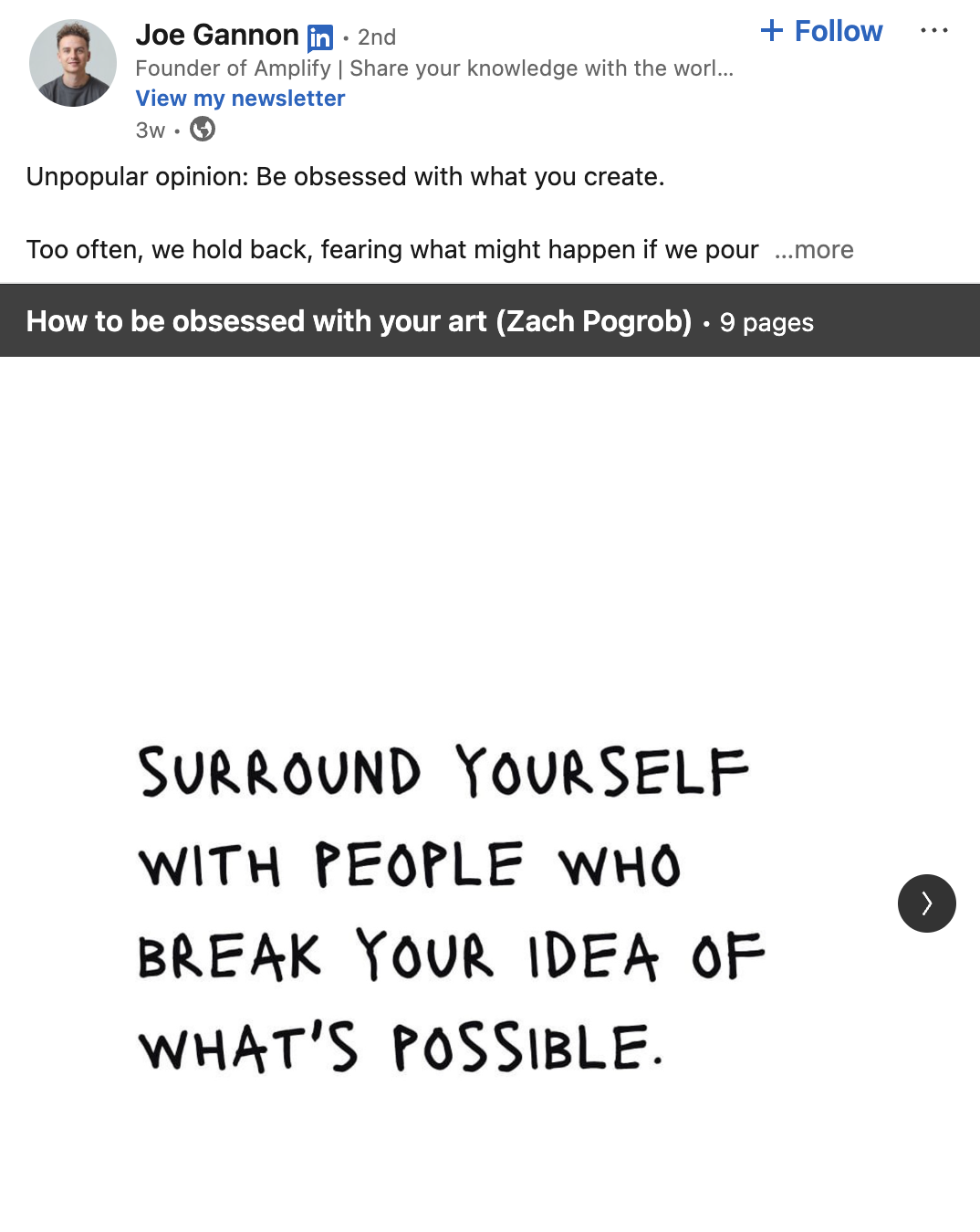
This kind of post grabs your audience's attention immediately. It introduces tension, which naturally leads to comments, and more comments mean more reach.
Here’s another example you can consider in your next carousel post:
“Why I Don’t Apply to Job Postings Anymore”
- Slide 1: Bold personal statement
- Slides 2–5: Story + insight
- Final slide: Offer a takeaway or a tip for other job seekers
Thought leadership carousels are great for building your personal brand. You don’t need to be controversial, just honest and specific. Talk about something you believe, and back it up with a short story or a real example.
If you're working on becoming a top voice in your space, this is one of the best formats to use. It creates trust, positions you as someone with a point of view, and encourages real discussion.
This format is especially useful if you're sharing a founder journey, industry shift, or any moment that challenged your assumptions. Add a personal touch. Make it yours.
3. Case Studies or Results
One of the best ways to build credibility on LinkedIn is by showing real results, not just talking about what works, but proving it.
Carousel posts are perfect for this. You can break down what happened, how you did it, and what others can learn from it, step by step.
Here’s a simple structure that works:
“How We Got 10K Users From a Single LinkedIn Post”
- Slide 1: The big result
- Slides 2–5: What you did (with screenshots, numbers, or stages)
- Final slide: Key takeaway + optional CTA (“DM me for the full playbook” or “Here’s the tool we used”)
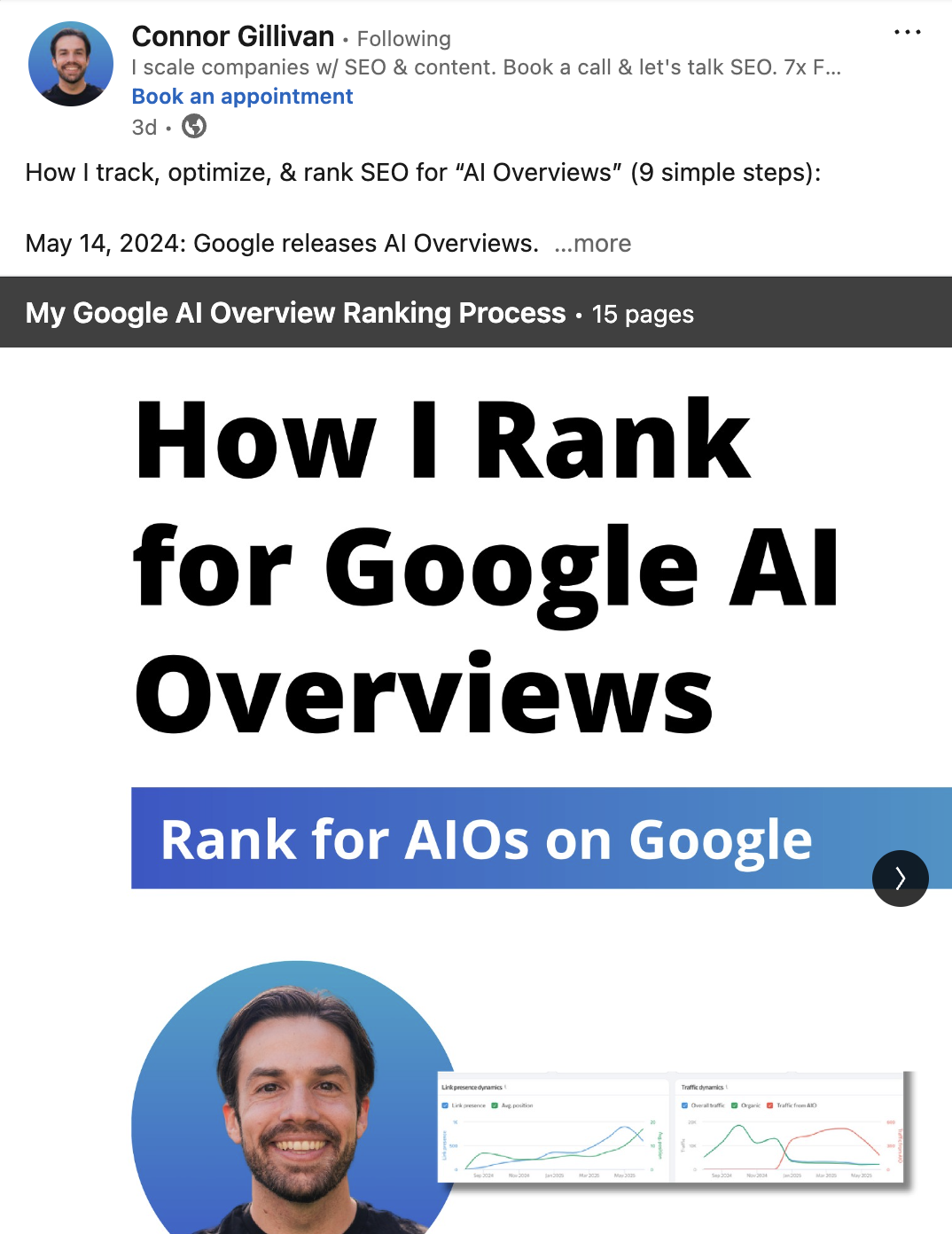
Another carousel post can be:
“One Carousel Ad → $50K in Pipeline: Here’s the Breakdown”
- Slide 1: Eye-catching stat or outcome
- Slides 2–6: The exact steps, channels, or decisions you made
- Final slide: “Would you try this?” or “Here’s what I’d do differently next time”
Posts like these work because they blend story, transparency, and strategy. People want insights they can apply to their own work, and real-world numbers get more attention than generic advice.
If you’re using LinkedIn to grow a product, offer services, or attract customers, this format builds trust fast. It shows you’re not just sharing ideas (you’re getting results).
Need more inspiration for formats that stand out in the feed? Here's a breakdown of LinkedIn post examples that consistently drive engagement.
4. Tips & Toolkits
If you want your content to be saved, shared, and bookmarked, try creating a carousel that shares tools, templates, or quick wins.
People love lists they can swipe through, especially when they help solve a problem fast. Here’s a common format:
“7 AI Tools That Save Me 10+ Hours a Week”
- Slide 1: Hook with benefit
- Slides 2–7: Each slide = one tool + what it’s good for
- Final slide: Bonus tip or a question like “Which one will you try first?”
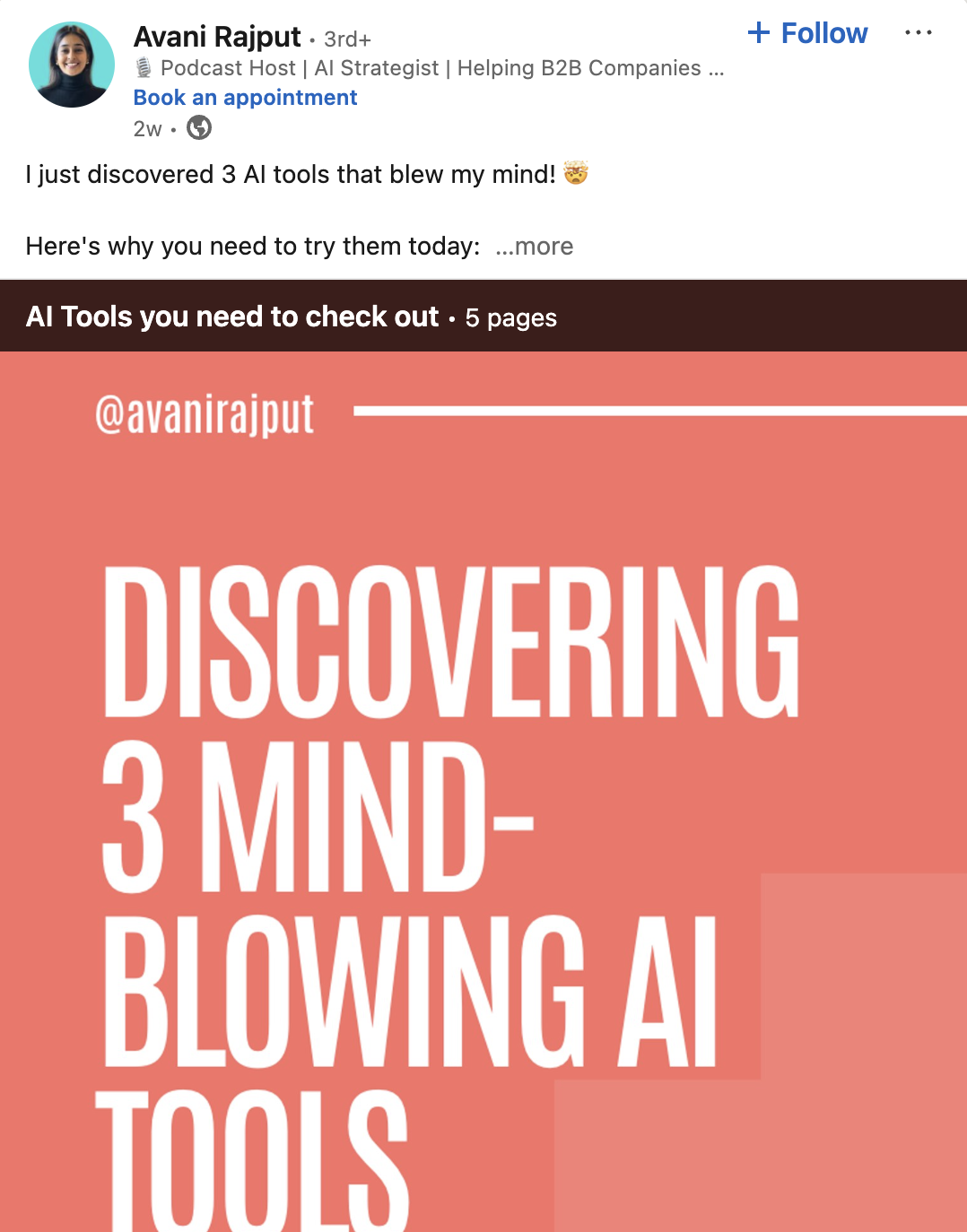
You can also share playbooks or systems you personally use:
“My LinkedIn Content System (3-Step Framework)”
- Slide 1: What it helps with (consistency, engagement, time-saving)
- Slides 2–4: Step-by-step breakdown
- Final slide: Offer to send a full tutorial or Notion doc
These posts often do well across social media platforms because they’re practical and quick to consume.
They're perfect if you’re building a personal brand or growing an audience around specific expertise, marketing, sales, recruiting, or operations.
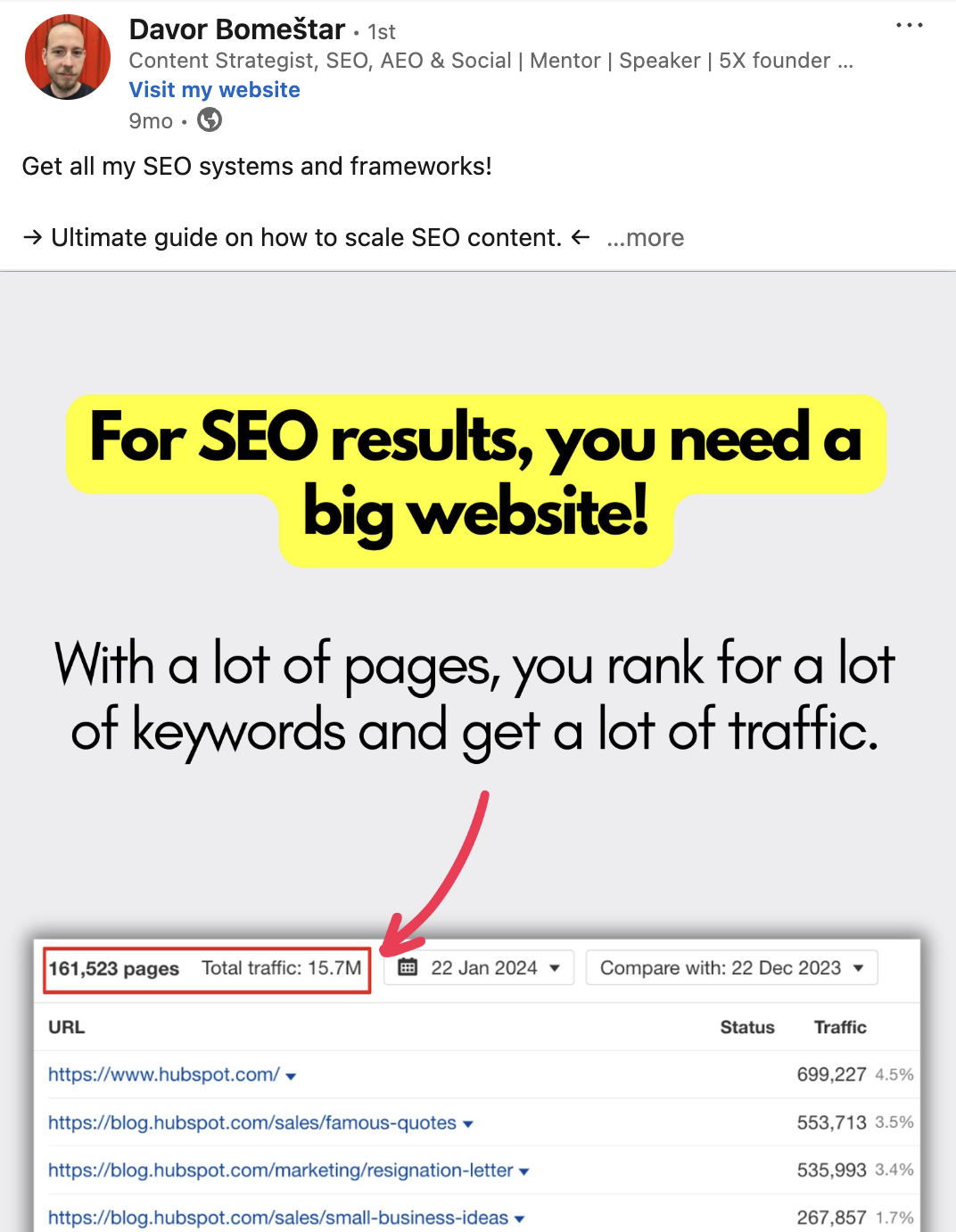
Want to see more content like this in action? Check out these ChatGPT prompts for LinkedIn posts, a great example of how to turn toolkits into repeatable content.
💡 With Podawaa, you can target the right audience and boost your LinkedIn post visibility with more likes and comments (from real people).
Try Podawaa for Free →5. Personal Stories
Some of the most powerful carousel posts on LinkedIn come from real experiences. Wins, failures, career pivots, and lessons learned. These make people stop scrolling because they feel honest.
You don’t need to be a polished writer to tell a good story. You just need a moment that taught you something, and a few slides to break it down.
Here’s a simple example:
“My First Freelance Gig Paid Me $30. Here’s What I Learned”
- Slide 1: The situation or moment
- Slides 2–5: What happened, what went wrong, what changed
- Final slide: One clear lesson or takeaway
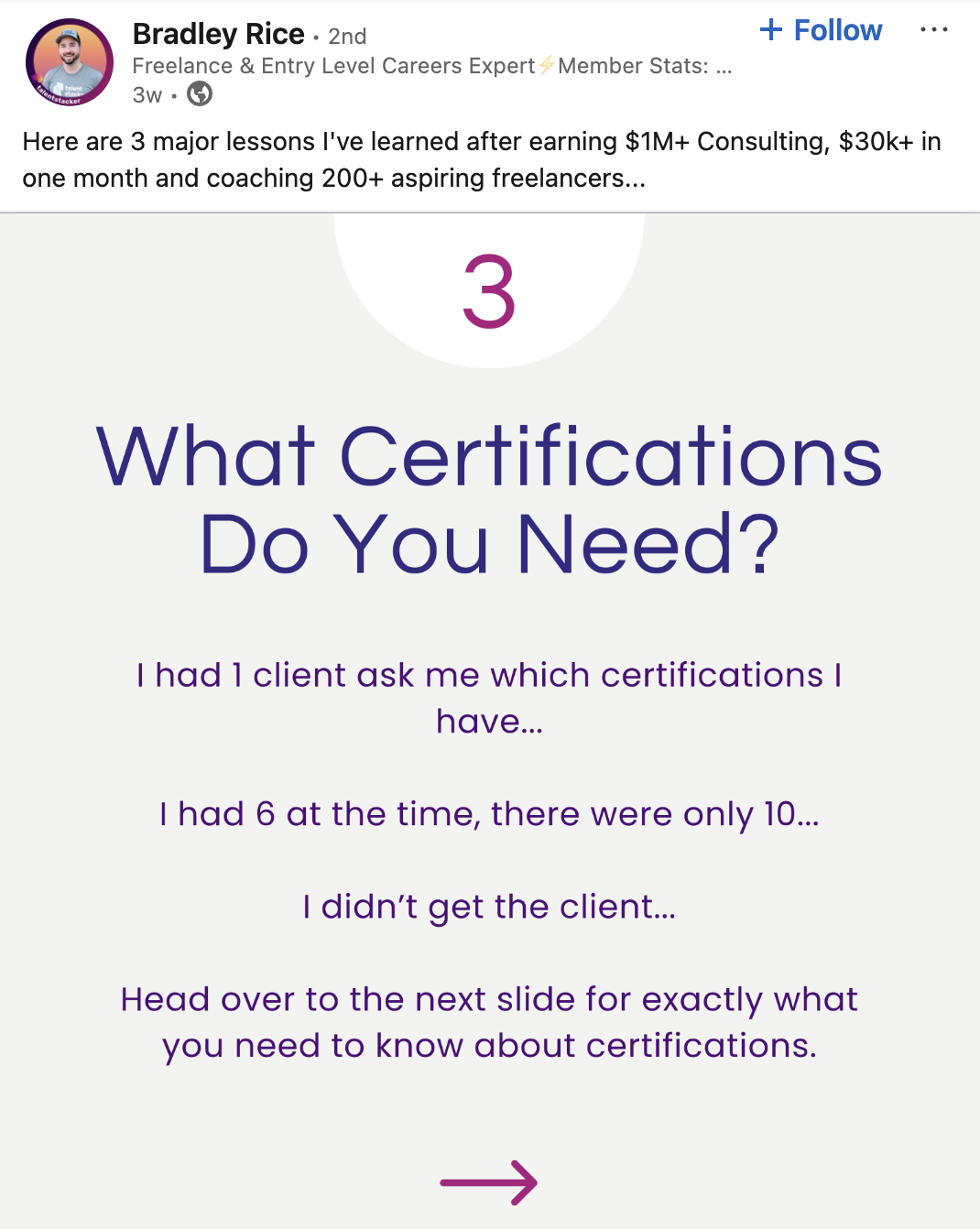
These posts work because they make your content relatable. Other LinkedIn users see themselves in your story, and that’s what drives real engagement.
Another version might be:
“I Burned Out at Work. This Is How I Reset My Career”
- Slide 1: Raw, honest hook
- Slides 2–4: The struggle
- Slides 5–6: What you did to fix it
- Final slide: Ask a question: “Have you ever felt this way?”
Stories like these are a great way to build trust with your audience and show the human side of your brand or business.
For more ways to connect your personal journey to your content, here’s a guide on how to grow on LinkedIn without sounding like everyone else.
Ready to Create Your Own Carousel?
You’ve seen what works—now it’s your turn.
Use our guide linked in the intro to create your first carousel, step by step.
Once it’s live, boost it with Podawaa. The first hour after posting is when LinkedIn decides how far your content should go.
In other words, Podawaa helps you increase reach, saves, and engagement by getting your post in front of the right audience, not bots or spammy pods.
💡 With Podawaa, you can target the right audience and boost your LinkedIn post visibility with more likes and comments (from real people).
Try Podawaa for Free →FAQs
How many slides should a LinkedIn carousel have?
There’s no perfect number, but aim for 6–10 slides. Use as many slides as needed to tell your story without losing attention. Just avoid overloading each slide with too much text; clean layouts increase LinkedIn engagement rate.
Can I use carousels for my company or brand?
Absolutely. Many LinkedIn carousel ads and brand stories come from businesses sharing results, frameworks, or behind-the-scenes insights. It’s a great way for your company to boost organic reach and show what makes your content stand out.
What are the technical requirements for uploading a carousel?
Use a PDF file with square (1080x1080 px) slides. These are the most accepted image types on LinkedIn’s document sharing button. Make sure your design avoids text cutting, especially on mobile, and always include a complete introduction and clear destination URL on the last slide.

